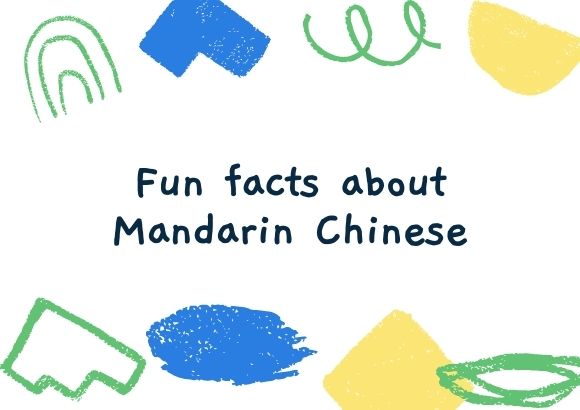10 Interesting Facts about the Mandarin Chinese Language
 Schooladvisor Team
Schooladvisor TeamThe United Nations celebrates World Chinese Language Day every year on the 20th of April. Quoting from the UN, the purpose of this observance is “to celebrate multilingualism and cultural diversity as well as to promote equal use of all six official languages throughout the Organization.”
On this World Chinese Language Day, let’s learn some fun facts about the Mandarin Chinese language!
1. The first Chinese Language Day was held on 12 November 2010.
The date was then moved to April 20 in 2011. This is because April 20 corresponds with the “Rain of Millet” (Guyu) in the Chinese calendar and it celebrates the legendary Chinese historian Cangjie. Cangjie is credited with inventing the Chinese characters and according to the tales, when he did so, “the deities and ghosts cried and the sky rained millet.” Millet is a cereal crop used as food for humans.
2. Written Chinese is over 3,000 years old.
The written history of China dates back to the Shang Dynasty (c. 1600–1046 BC) which was over 3000 years ago. The oldest Chinese characters that have been discovered are fragments of characters carved into “oracle bones''. These bones were usually found on animal bones and turtle shells and they were used for divination.
3. Chinese writing has over 50,000 characters.
There are approximately 50,000 characters in the standard Chinese dictionary. However, modern dictionaries only list up to 20,000 characters in use. To be fluent as a well-educated native Chinese, you have to master at least 8,000 Chinese characters. But to be able to read a newspaper, learning 2000 - 3000 words will be sufficient.
4. Around 1 billion people speak Mandarin Chinese around the world.
There are 1.3 billion native Chinese speakers in the world today and 917 million from that figure speak Mandarin. This makes the language one of the most spoken languages in the entire world! If you want to learn a language that is spoken by one in six people in the world, you might want to take up Mandarin class after this.
5. Mandarin Chinese is mostly spoken in China, Taiwan, Singapore, and Malaysia.
Other than China, Mandarin is also spoken in countries like Taiwan, Singapore and Malaysia. Up to a point, the ability to speak Mandarin becomes a controversial issue when most hiring managers are looking for candidates who speak Mandarin to fill up positions in their companies. That is how influential this language can be to one’s future in the professional world!
6. Mandarin Chinese does not have an alphabet.
While English language has 26 letters in the alphabet and Russian has 33 in the Cyrillic alphabet, there is no such thing as Chinese alphabet. Chinese language only has characters and these characters are joined together to make up different words. It is worth noting that Chinese language has very simple grammar. There is no singular or plural and the language is gender neutral.
7. There are two different kinds of Chinese characters.
One is traditional and the other is simplified. Traditional characters that have more strokes, and take more time to write are used among communities in Taiwan, Macau, Hong Kong, and overseas Chinese. Meanwhile, China uses simplified characters.
8. Mandarin Chinese has four tones.
Mastering the four Chinese tones can be one of the most difficult aspects of learning Mandarin Chinese. What do these four tones mean? It means, for one given word or syllable, there will be four different meanings. For instance, the word “ma” can either mean horse, mother, hemp, or to scold. Therefore, you really need to be careful with these tones!
9. The word Mandarin was given by the Portuguese.
Portuguese borrowed the Sanskrit word “mantra” and changed it into “mandarium”. “Mantra” means “counsellor”, someone who assists the leader and provides advice. The Portuguese word “mandarium” was formally adopted by English and became the term “mandarin” in 1589. This term was then used to describe Chinese officials during that period.
10. Chinese became an official UN language in 1946.
Did you know that there are six official languages of the United Nations? These languages are Arabic, English, French, Russian, Spanish and Chinese! However, Chinese language was only used as a working language in 1973 for the General Assembly and 1974 for the UN Security Council.
Check out also:
Apps to Help your Child Learn Mandarin
A look at Chinese Schools in Malaysia
Facts or Misconceptions About Chinese Schools
What Kids Think about Switching from Chinese Schools to International Schools?
What Parents Really Think About Chinese Schools vs International Schools

